HSBC 2010 Annual Report Download - page 312
Download and view the complete annual report
Please find page 312 of the 2010 HSBC annual report below. You can navigate through the pages in the report by either clicking on the pages listed below, or by using the keyword search tool below to find specific information within the annual report.-
 1
1 -
 2
2 -
 3
3 -
 4
4 -
 5
5 -
 6
6 -
 7
7 -
 8
8 -
 9
9 -
 10
10 -
 11
11 -
 12
12 -
 13
13 -
 14
14 -
 15
15 -
 16
16 -
 17
17 -
 18
18 -
 19
19 -
 20
20 -
 21
21 -
 22
22 -
 23
23 -
 24
24 -
 25
25 -
 26
26 -
 27
27 -
 28
28 -
 29
29 -
 30
30 -
 31
31 -
 32
32 -
 33
33 -
 34
34 -
 35
35 -
 36
36 -
 37
37 -
 38
38 -
 39
39 -
 40
40 -
 41
41 -
 42
42 -
 43
43 -
 44
44 -
 45
45 -
 46
46 -
 47
47 -
 48
48 -
 49
49 -
 50
50 -
 51
51 -
 52
52 -
 53
53 -
 54
54 -
 55
55 -
 56
56 -
 57
57 -
 58
58 -
 59
59 -
 60
60 -
 61
61 -
 62
62 -
 63
63 -
 64
64 -
 65
65 -
 66
66 -
 67
67 -
 68
68 -
 69
69 -
 70
70 -
 71
71 -
 72
72 -
 73
73 -
 74
74 -
 75
75 -
 76
76 -
 77
77 -
 78
78 -
 79
79 -
 80
80 -
 81
81 -
 82
82 -
 83
83 -
 84
84 -
 85
85 -
 86
86 -
 87
87 -
 88
88 -
 89
89 -
 90
90 -
 91
91 -
 92
92 -
 93
93 -
 94
94 -
 95
95 -
 96
96 -
 97
97 -
 98
98 -
 99
99 -
 100
100 -
 101
101 -
 102
102 -
 103
103 -
 104
104 -
 105
105 -
 106
106 -
 107
107 -
 108
108 -
 109
109 -
 110
110 -
 111
111 -
 112
112 -
 113
113 -
 114
114 -
 115
115 -
 116
116 -
 117
117 -
 118
118 -
 119
119 -
 120
120 -
 121
121 -
 122
122 -
 123
123 -
 124
124 -
 125
125 -
 126
126 -
 127
127 -
 128
128 -
 129
129 -
 130
130 -
 131
131 -
 132
132 -
 133
133 -
 134
134 -
 135
135 -
 136
136 -
 137
137 -
 138
138 -
 139
139 -
 140
140 -
 141
141 -
 142
142 -
 143
143 -
 144
144 -
 145
145 -
 146
146 -
 147
147 -
 148
148 -
 149
149 -
 150
150 -
 151
151 -
 152
152 -
 153
153 -
 154
154 -
 155
155 -
 156
156 -
 157
157 -
 158
158 -
 159
159 -
 160
160 -
 161
161 -
 162
162 -
 163
163 -
 164
164 -
 165
165 -
 166
166 -
 167
167 -
 168
168 -
 169
169 -
 170
170 -
 171
171 -
 172
172 -
 173
173 -
 174
174 -
 175
175 -
 176
176 -
 177
177 -
 178
178 -
 179
179 -
 180
180 -
 181
181 -
 182
182 -
 183
183 -
 184
184 -
 185
185 -
 186
186 -
 187
187 -
 188
188 -
 189
189 -
 190
190 -
 191
191 -
 192
192 -
 193
193 -
 194
194 -
 195
195 -
 196
196 -
 197
197 -
 198
198 -
 199
199 -
 200
200 -
 201
201 -
 202
202 -
 203
203 -
 204
204 -
 205
205 -
 206
206 -
 207
207 -
 208
208 -
 209
209 -
 210
210 -
 211
211 -
 212
212 -
 213
213 -
 214
214 -
 215
215 -
 216
216 -
 217
217 -
 218
218 -
 219
219 -
 220
220 -
 221
221 -
 222
222 -
 223
223 -
 224
224 -
 225
225 -
 226
226 -
 227
227 -
 228
228 -
 229
229 -
 230
230 -
 231
231 -
 232
232 -
 233
233 -
 234
234 -
 235
235 -
 236
236 -
 237
237 -
 238
238 -
 239
239 -
 240
240 -
 241
241 -
 242
242 -
 243
243 -
 244
244 -
 245
245 -
 246
246 -
 247
247 -
 248
248 -
 249
249 -
 250
250 -
 251
251 -
 252
252 -
 253
253 -
 254
254 -
 255
255 -
 256
256 -
 257
257 -
 258
258 -
 259
259 -
 260
260 -
 261
261 -
 262
262 -
 263
263 -
 264
264 -
 265
265 -
 266
266 -
 267
267 -
 268
268 -
 269
269 -
 270
270 -
 271
271 -
 272
272 -
 273
273 -
 274
274 -
 275
275 -
 276
276 -
 277
277 -
 278
278 -
 279
279 -
 280
280 -
 281
281 -
 282
282 -
 283
283 -
 284
284 -
 285
285 -
 286
286 -
 287
287 -
 288
288 -
 289
289 -
 290
290 -
 291
291 -
 292
292 -
 293
293 -
 294
294 -
 295
295 -
 296
296 -
 297
297 -
 298
298 -
 299
299 -
 300
300 -
 301
301 -
 302
302 -
 303
303 -
 304
304 -
 305
305 -
 306
306 -
 307
307 -
 308
308 -
 309
309 -
 310
310 -
 311
311 -
 312
312 -
 313
313 -
 314
314 -
 315
315 -
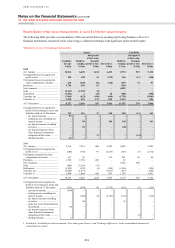 316
316 -
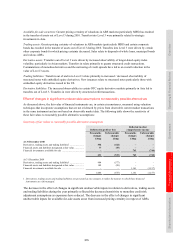 317
317 -
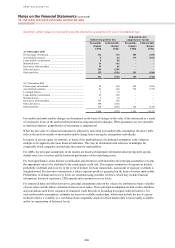 318
318 -
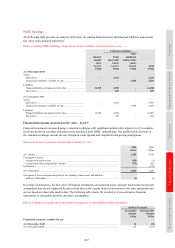 319
319 -
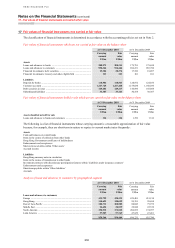 320
320 -
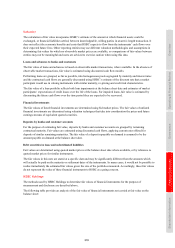 321
321 -
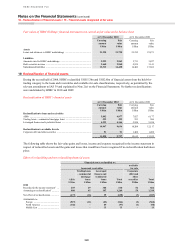 322
322 -
 323
323 -
 324
324 -
 325
325 -
 326
326 -
 327
327 -
 328
328 -
 329
329 -
 330
330 -
 331
331 -
 332
332 -
 333
333 -
 334
334 -
 335
335 -
 336
336 -
 337
337 -
 338
338 -
 339
339 -
 340
340 -
 341
341 -
 342
342 -
 343
343 -
 344
344 -
 345
345 -
 346
346 -
 347
347 -
 348
348 -
 349
349 -
 350
350 -
 351
351 -
 352
352 -
 353
353 -
 354
354 -
 355
355 -
 356
356 -
 357
357 -
 358
358 -
 359
359 -
 360
360 -
 361
361 -
 362
362 -
 363
363 -
 364
364 -
 365
365 -
 366
366 -
 367
367 -
 368
368 -
 369
369 -
 370
370 -
 371
371 -
 372
372 -
 373
373 -
 374
374 -
 375
375 -
 376
376 -
 377
377 -
 378
378 -
 379
379 -
 380
380 -
 381
381 -
 382
382 -
 383
383 -
 384
384 -
 385
385 -
 386
386 -
 387
387 -
 388
388 -
 389
389 -
 390
390 -
 391
391 -
 392
392 -
 393
393 -
 394
394 -
 395
395 -
 396
396
 |
 |

HSBC HOLDINGS PLC
Notes on the Financial Statements (continued)
16 – Fair values of financial instruments carried at fair value
310
Valuation techniques incorporate assumptions about factors that other market participants would use in their
valuations, including interest rate yield curves, exchange rates, volatilities, and prepayment and default rates. During
the year, as a result of evolving market practice in the pricing of certain interest rate derivatives, HSBC has, for single
currency swaps with collateralised counterparties and in significant major currencies, adopted a discounting curve
that reflects the overnight interest rate (‘OIS discounting’). Previously, in line with market practice, discount curves
did not reflect this overnight interest rate component but were based on a term LIBOR rate. The financial effect of
this change was not significant.
The majority of valuation techniques employ only observable market data. However, certain financial instruments are
valued on the basis of valuation techniques that feature one or more significant market inputs that are unobservable,
and for them, the derivation of fair value is more judgemental. An instrument in its entirety is classified as valued
using significant unobservable inputs if, in the opinion of management, a significant proportion of the instrument’s
carrying amount and/or inception profit (‘day 1 gain or loss’) is driven by unobservable inputs. ‘Unobservable’ in this
context means that there is little or no current market data available from which to determine the price at which an
arm’s length transaction would be likely to occur. It generally does not mean that there is no data available at all upon
which to base a determination of fair value (consensus pricing data may, for example, be used).
In certain circumstances, primarily where debt is hedged with interest rate derivatives, HSBC records its own debt in
issue at fair value, based on quoted prices in an active market for the specific instrument concerned, if available.
When quoted market prices are unavailable, the own debt in issue is valued using valuation techniques, the inputs for
which are either based upon quoted prices in an inactive market for the instrument, or are estimated by comparison
with quoted prices in an active market for similar instruments. In both cases, the fair value includes the effect of
applying the credit spread which is appropriate to HSBC’s liabilities. The change in fair value of issued debt
securities attributable to the Group’s own credit spread is computed as follows: for each security at each reporting
date, an externally verifiable price is obtained or a price is derived using credit spreads for similar securities for the
same issuer. Then, using discounted cash flow, each security is valued using a LIBOR-based discount curve. The
difference in the valuations is attributable to the Group’s own credit spread. This methodology is applied consistently
across all securities.
Structured notes issued and certain other hybrid instrument liabilities are included within trading liabilities and are
measured at fair value. The credit spread applied to these instruments is derived from the spreads at which HSBC
issues structured notes. These market spreads are smaller than credit spreads observed for plain vanilla debt or in the
credit default swap markets.
Gains and losses arising from changes in the credit spread of liabilities issued by HSBC reverse over the contractual
life of the debt, provided that the debt is not repaid at a premium or a discount.
Fair value adjustments
Fair value adjustments are adopted when HSBC considers that there are additional factors that would be considered
by a market participant that are not incorporated within the valuation model. The magnitude of fair value adjustments
depends upon many entity-specific factors, and therefore fair value adjustments may not be comparable across the
banking industry.
HSBC classifies fair value adjustments as either ‘risk-related’ or ‘model-related’. The majority of these adjustments
relate to Global Banking and Markets.
Movements in the level of fair value adjustments do not necessarily result in the recognition of profits or losses
within the income statement. For example, as models are enhanced, fair value adjustments may no longer be required.
Similarly, fair value adjustments will decrease when the related positions are unwound, but this may not result in
profit or loss.
